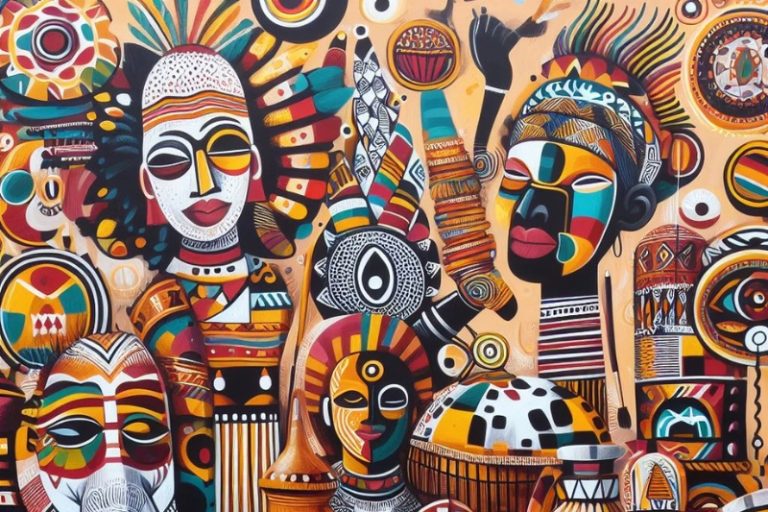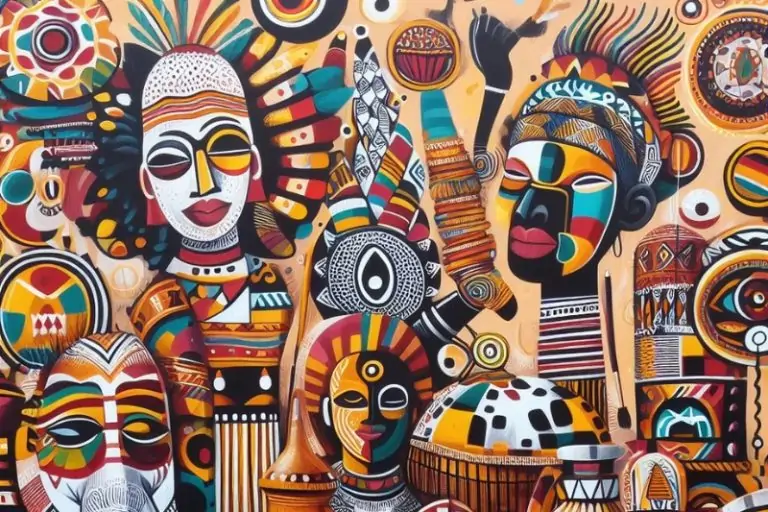

the rich tapestry of african art a journey through innovation and customary practice
Including the visual arts of sub-Saharan Africa, African art consists of a rich tapestry of media, including sculpture, painting, ceramics, rock art, textiles, masks, personal decorating, and jewelry. Given its great variety, this art genre is not readily summed up. From ceremonial purposes and pure aesthetic enjoyment to entertainment and political or ideological relevance, art in Africa has many uses. Unlike the Western duality of fine art and craft, African art deftly combines both categories where expertise and aesthetic worth are entwined.
Precolonial African art defies easy Western conceptions of art. Many African languages hardly see the idea of art as something different from ability. This reflects a difference in historical development rather than a cultural shortfall. Through certain social, economic, and intellectual transformations that did not coincide in Africa before the colonial era, European civilizations evolved the difference between fine art and craft. African art traditions thus have to be valued in their respective cultural and aesthetic settings. For instance, the Tiv people of Nigeria regard a well-hoed field of yams as a major work of art; the Nuer and Dinka pastoralists of South Sudan could view a display ox castrated for visual effect as art.
Western ideas of African art can center primarily on masks and ignore other important forms like textiles and ceramics, which were written off as simple handicap work. For example, painting is somewhat common in Africa but was historically found on human bodies, house walls, and rock faces; hence, it was less valuable and hence less known by early Western collectors. This has distorted knowledge of the African aesthetic scene.
African art is often prized for its aesthetic appeal in addition to its use. Like in other parts of the world, the complex and varied reasons for producing art drive inspiration. Often created for ceremonial or pragmatic uses, sculpted objects were valued for their beauty as well. The belief that African artists are limited by tradition more than their Western counterparts runs against the inventiveness and originality inherent in African art. As evidenced by Asante silk weaving and Kuba raffia stitching, which demand originality, traditions in African art inspire creativity.
Notwithstanding this complexity, several broad traits of African art are clear-cut. African artists often stress originality, visual abstraction, balanced composition with asymmetry, and the centrality of sculpture. Crucially, performance and assemblage combine music, dance, dress, and bodily embellishment with sculpture and masks to give art objects purpose and dynamism.
Many times, African art is classified based on techniques connected to particular ethnic groups or tribes. But the idea of tribe is dubious, and most academics have given up on it. Though they might allude to languages, governmental entities, or other groups, “tribal” titles do not always line up with artistic styles. Often depicted in art, ethnic identity in Africa is a complicated web of connections comprising marriage, language, religion, and ancestral heritage.
A common medium in African art, sculpture uses wood, copper alloys, iron, ivory, pottery, and stone, among other materials. The most well-known is wood, yet copper alloy castings and ceramics also show notable sculptural success. For instance, early Nok Nigerian culture created massive ceramic sculptures around the fifth century BCE. Particularly in Ife and Benin, copper-alloy castings show advanced methods and artistic refinement dating back to the 9th century CE.
Particularly varied is West African art, with unique forms in places including the western Sudan, Guinea-Bissau, and Nigeria. In western Sudan, Islamic influences blend with local customs to produce Dogon and Tellem with schematic forms. Linked with spiritual ideas, dogon sculpture shows masks and figures utilized in family shrines and ceremonies. Further highlighting the creative diversity of the area are the Bambara of Mali with their complex masks and headdresses and the Senufo of Côte d’Ivoire, renowned for its Poro social sculptures and masks.
Notable among the Baga and Bidyogo peoples in Guinea are their spectacular masquerades and holy artifacts. Unique for their Sande society’s female masking customs, the Mende of Sierra Leone create smooth black helmet-shaped masks, symbolizing water spirits. Likewise, the Dan-We complex reflects the creative spectrum among the Dan, De, and We peoples by spanning from smooth and restrained to grotesque.
African art is thus a dynamic and multifarious legacy well ingrained in social, cultural, and spiritual settings. It defies easy classification and has to be seen through the prism of respect for its historical evolution and essential values.
The U.S.-based driver training company Zutobi analyzed road safety worldwide and found South Africa stays last in driving danger since…
The Basketball Africa League (BAL) returns for its 2025 season with exciting changes and developments. Since 2019 the NBA-linked basketball…
The Somali president supports their military forces to eliminate the threats from Al-Shabaab, ISIS, and Al-Qaeda. The Somali National Army…
UAE President Sheikh Mohamed bin Zayed Al Nahyan held talks with President Faustin Archange Touadéra of the Central African Republic…
African football teams struggle intensely in the World Cup Qualification rounds to earn their place on the international football stage.…
The journey toward the 2026 FIFA World Cup is rapidly intensifying for all African teams, who now hold a historical…
This website uses cookies.